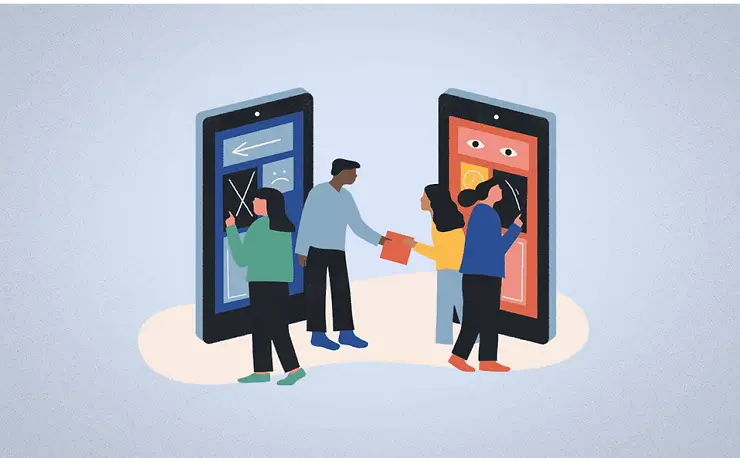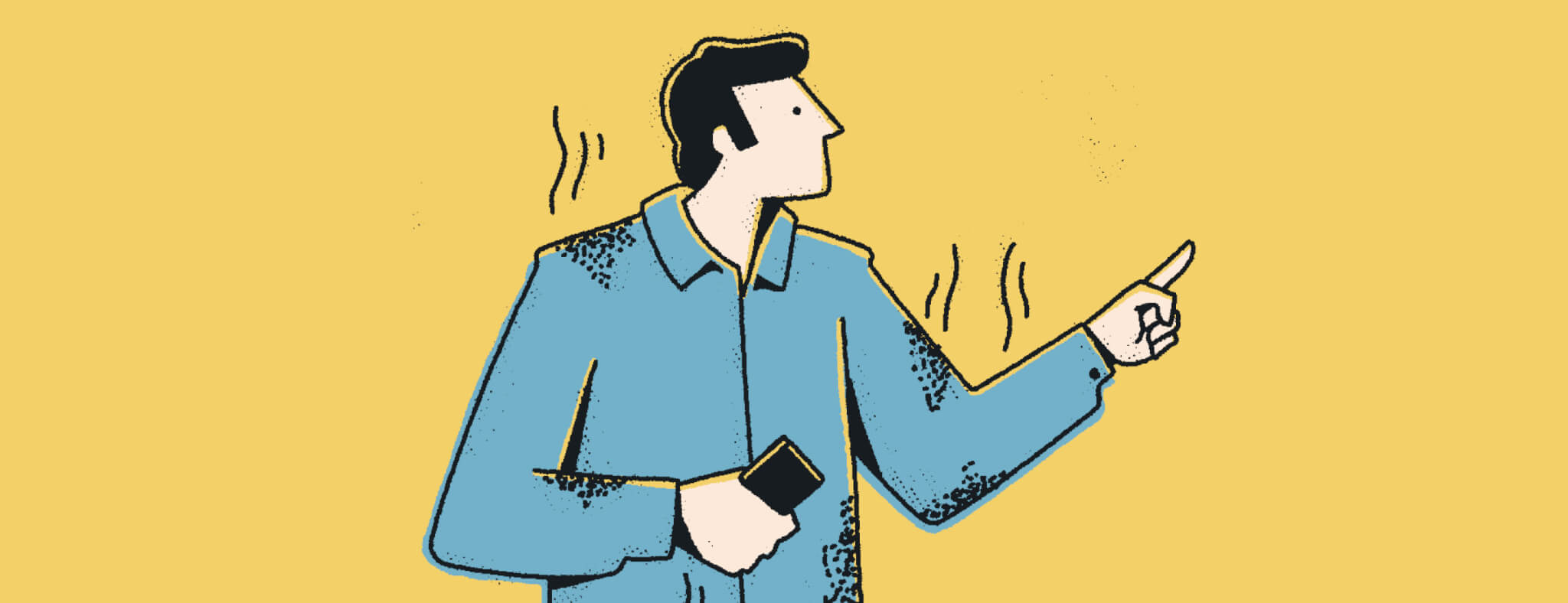A young, New York City police officer named Frank transferred to a new division when he needed a fresh start. He wanted to make friends but couldn’t bring himself to conform to the practice of the other officers: pocketing cash bribes. Soon, Frank found himself ostracized and isolated.
When he told his commanding officers what was happening, things only got worse. Other cops left Frank hanging when he called for backup. Not going along with the crowd almost cost Frank his life, as depicted in the 1973 movie, Serpico.
This scenario from classic cinema is a pretty dramatic example of the negative impact of conformity bias (or in Frank’s case not conforming). But in our everyday lives — and most of our workplaces — the manifestations of this bias will be far more subtle.
What is conformity bias?
Conformity bias is formed when someone follows the patterns of behavior or thought that others in their community have established instead of thinking for themselves (which is to say they “conform”). If you’ve been on the internet for any amount of time, you’ve probably heard or read the term “sheeple” (sheep + people), which refers to people who willingly follow the herd, demonstrating a strong conformity bias.
Conformity bias is a bit different than implicit biases like gender bias or ability bias, which influence how we think about other people. Conformity bias influences our own actions. It’s our bias towards conformity.
But like other biases, conformity bias can lead to taking actions that are not thoughtful or considerate and thus inflict harm on others.
Is conformity always bad?
No, conformity isn’t always bad. In fact, it was essential to surviving in the early days of mankind, when being a part of a group allowed us to cooperate to find food, build shelter, and fight off predators. In some ways, this survival mentality is still prevalent today. Many members of marginalized groups achieve safety and stability through strong community ties, so conforming to community standards and expectations can be part of how they gain support in a society that isn’t set up for their success.
However, our natural bias toward conformity can also stem from less wholesome inclinations, like a desire for approval or a particular outcome. It might be because we want to win the favor of a charismatic leader we admire, or we want to ingratiate ourselves to reap the rewards of getting into someone’s good graces. Perhaps we conform so we can feel like part of the “in-crowd.” These motivations might lead to behavior that excludes others.
Addressing conformity bias isn't necessarily about eliminating it—which might actually be impossible given that we are social creatures. Rather, addressing conformity bias is about cultivating an awareness of how the groups of which we are part influence our decisions. With this awareness, we can hopefully build groups that make better, more inclusive decisions.
Why do we conform? Four drivers of conformity
Social psychologist Herbert Kelman PhD identified three levels of influence that drive conformity: compliance, identification, and internalization. Edward E. Jones, another social psychologist, built on Kelman’s work and identified ingratiation as a fourth mode of conformity.
1. Compliance
Compliance is when we conform because we’re hoping for a reward or we fear an unpleasant outcome. Kelman considered compliance the weakest influence because many people will do what they want once there’s no pressure to conform. Compliance typically starts young: We go to school, take regular baths, and eat things we don’t like for dinner because our parents expect it. As adults, we drive the speed limit on the way to work because we don’t want to get a speeding ticket which could then make us even later for work than we already are! But many people don’t comply when they can get away with an alternative that aligns with their preferences or comfort more.
2. Identification
Sometimes people adopt the behavior and thinking of someone they identify with and admire, or because they identify with a mission or cause bigger than themselves. For example, imagine a new hire admires a senior manager, and that manager always works through lunch and eats at their desk. The new hire might start doing that too, instead of eating out and taking a break from work, even if taking a lunch break is the norm for most other people at the company. Or perhaps a software engineer likes wearing a shirt and tie to the office every day, but they switch to black T-shirts and jeans because that’s what the CEO wears.
People usually stop conforming when they leave the group or stop identifying with them. If that senior manager falls out of favor with leadership, our new hire might stop identifying with them and then stop working through lunch. Or, if the new hire leaves the company a year later, they might eat lunch out at their new job.
3. Internalization
With internalization, people decide to pattern themselves after someone else’s behavior based on their own convictions. Kelman considered internalization the most profound form of conformity because people are motivated from within. This may describe a person who takes on a group’s behavior as their own. Someone who becomes concerned about climate change might internalize the need to transition away from fossil fuels and trade their gasoline-powered car in for an electric one.
4. Ingratiation
The word ingratiation means trying to get yourself into someone’s good graces. As a mode of conformity, ingratiation is when someone conforms to the desires or tastes of someone else in order to influence a particular outcome. Ingratiation can look like other types of conformity, but the intention to influence a specific outcome is an essential part of what makes it different.
For example, let’s return to the new hire that works over lunch because they see a manager they admire doing the same. If they do this because they aspire to be like them, that’s identification. If, however, they mean to use this pattern of behavior as a way to convince the manager that they are “the right kind of person” to be promoted to a leader at the company, that becomes ingratiation. With ingratiation, we essentially manipulate someone else’s conformity bias to get something we want.

How conformity bias shows up in the workplace
The tendency to conform and follow the group can — and does — surface in specific areas of the workplace. Here are two examples:
Recruiting
When an interview team is considering a candidate to join the company can be an especially common time for conformity bias to come into play.
If interviewers compare impressions of the candidate outside of meetings explicitly for the purpose of synthesizing impressions into a hiring decision, individuals may withhold or change their perspective based on what they hear from others. Imagine a new team member is serving on an interview panel for the first time, and that team member experiences identification with their boss. In their interview, the new team member noticed a few red flags in the way the candidate talked about receiving feedback. But after the interview, the new team member’s boss shares that they think the candidate is a great fit for the role. The new team member may choose to stay quiet, rather than voicing their concerns.
It’s challenging to be the one who disagrees about a candidate everyone else likes or dislikes. But speaking up is essential to hiring the talent the company needs. At Ethena, we work to prevent this as much as possible by requiring interviewers to submit written feedback privately, immediately after their interview, and before any meetings with other interviewers.
Work environment
But even outside of hiring processes, conformity bias can have a range of negative implications for the well-being of workers, their advancement, and overall company innovation. A 2019 study found that Canadian, migrant workers often risked their health by conforming to poor working conditions, like working 14-hour days. The reason for their silence? They saw that workers who tried to request better working conditions were fired. This is compliance-based conformity bias at work: Workers conform to an actively harmful way of doing things because they fear a negative outcome.
The case highlighted in this study is extreme, but more subtle versions of this dynamic play out in toxic work environments. If a manager only promotes those who work long days, employees may fear that if they work normal hours, they won’t get promoted or won’t get raises. Or, employees may try to ingratiate themselves with their manager by volunteering to work late to get things done ahead of schedule. On the other hand, conformity can be an advantage to the worker in an environment where work-life balance is actively supported and encouraged—they can meet the needs of the company and their own needs without fear of reprisal.
Final thoughts
While conformity bias is a natural tendency to go along with the group, it can lead to herd mentality and poor decision-making. But there is also a second angle to take. By establishing inclusive, healthy, and safe workplace cultural norms, we can shape the natural human tendency to conform and belong in order to lead to positive outcomes for our companies and, most importantly, for our teams.
From hiring & interviewing training to data-driven talent management platforms, there are multiple strategies to help individuals identify and prevent harmful conformity bias at work and build cultures where the group is making inclusive and thoughtful decisions, thus reducing at least some of the more negative outcomes associated with conformity bias.
About Ethena
Ethena is a modern compliance training platform that delivers current, cringe-free content that employees actually enjoy. Our online compliance training courses bring the complexities of bias to life through thoughtful real-world examples, dynamic multimedia, and actionable next steps. Talk to a member of our team today to see if Ethena is right for your company.










